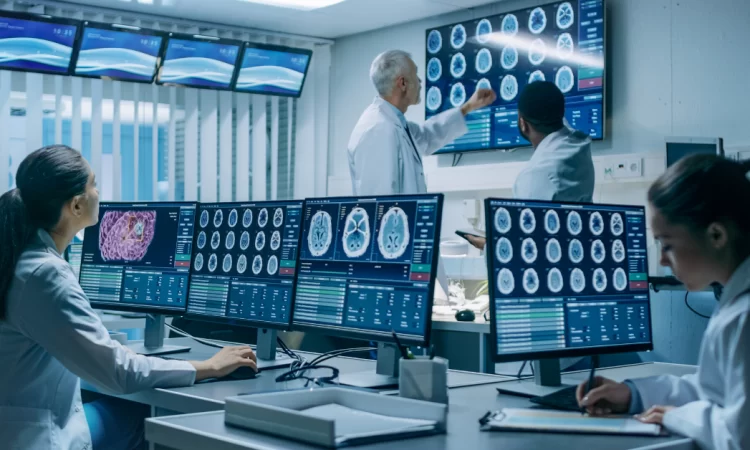
In healthcare, medical image annotation is essential. It involves labeling and marking medical images to help healthcare professionals spot specific structures, abnormalities, and areas of concern. By making images clearer and easier to understand, annotations support accurate diagnoses, efficient treatment planning, and important medical research. In this blog, we’ll explore the basics of medical image annotation, how it functions, its main features, benefits, and future potential.
What is Medical Image Annotation?
In healthcare, medical image annotation means adding labels and notes to images such as X-rays, MRIs, CT scans, and ultrasounds. These annotations assist healthcare professionals in pinpointing specific structures, diseases, or areas of concern, making it simpler to interpret and analyze the images.
How Does Medical Image Annotation Work?
When it comes to annotating medical images, the following steps work in order:
- Image Capture: We start by obtaining medical images using tools like X-rays, MRIs, CT scans, or ultrasounds.
- Annotation Tools: Using specialized software, we add labels, draw outlines, and make notes on these images.
- Manual and Automated Annotation: Annotations can be done manually by experts or automatically using computer algorithms. While manual annotation is precise but time-consuming, automated annotation is quicker but requires high-quality training data.
- Review and Validation: Skilled professionals thoroughly review and validate the annotated images to ensure accuracy and consistency.
- Integration with Medical Systems: Finally, we integrate these annotated images into medical systems such as PACS and EHR, ensuring easy access and sharing among healthcare providers.
Key Features of Medical Image Annotation
- Precision: High accuracy in identifying and labeling anatomical structures and abnormalities.
- Scalability: Ability to handle large volumes of images and annotations efficiently.
- Interoperability: Integration with various medical imaging systems and EHRs.
- User-Friendly Interface: Intuitive tools for manual annotation by healthcare professionals.
- AI and Machine Learning: Advanced algorithms for automated and semi-automated annotation.
- Advantages of Medical Image Annotation
- Improved Diagnostic Accuracy: Helps in precise diagnosis and treatment planning.
- Enhanced Workflow Efficiency: Streamlines image analysis and interpretation, saving time for healthcare providers.
- Better Communication: Facilitates clear communication among healthcare teams with detailed visual references.
- Educational Value: Useful for teaching and training medical students and professionals.
- Data for Research: Provides rich datasets for medical research and the development of new diagnostic tools.
The Future of Medical Image Annotation
Looking forward, there are promising advancements on the horizon for medical image annotation:
- Artificial Intelligence: AI and machine learning will automate the annotation process, making it faster and more accurate.
- EHR Integration: Enhanced integration with electronic health records will ensure that annotated images are readily accessible, ultimately leading to improved patient care.
- Telemedicine: Better annotations will support telemedicine by enabling remote diagnosis and consultations.
- Personalized Medicine: Annotations will be customized to individual patient data, aiding personalized treatment plans.
- Advanced Visualization: Emerging technologies like 3D imaging and augmented reality will provide more sophisticated visualization and annotation options.
These advancements will improve patient outcomes and drive significant progress in medical imaging.
How to get started with Medical Image Annotation?
For organizations looking to excel in medical image annotation, Macgence is the ideal partner.
Macgence has a strong reputation for delivering excellent medical image annotation services. They use advanced AI and machine learning to offer precise, scalable, and user-friendly solutions. Their team of experts focuses on detail, which improves the quality of annotations and enhances diagnostic accuracy. Macgence also follows strict data security and privacy standards like GDPR, SOC 2, and ISO. Choosing Macgence means partnering with a leader that combines innovation and expertise to make significant advancements in medical imaging and patient care.
Conclusion
Medical image annotation is revolutionizing healthcare. It’s making diagnoses more accurate, workflows smoother, and communication among healthcare providers better. Thanks to AI advancements, improved integration with electronic health records (EHR), and the growth of telemedicine, image annotation is now essential for providing precise, efficient, and personalized care. These innovations are promising better patient outcomes and significant advancements in medical imaging.




